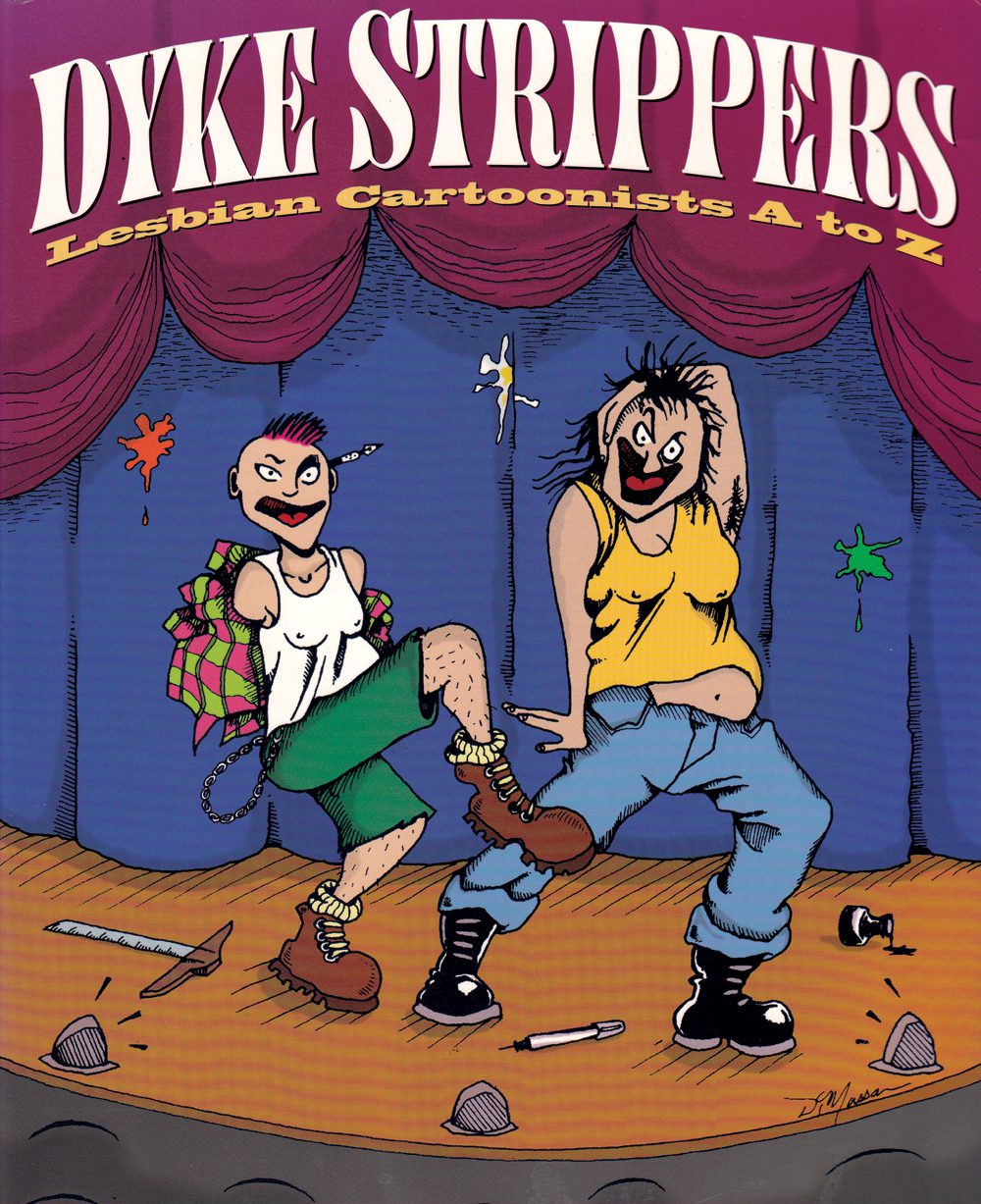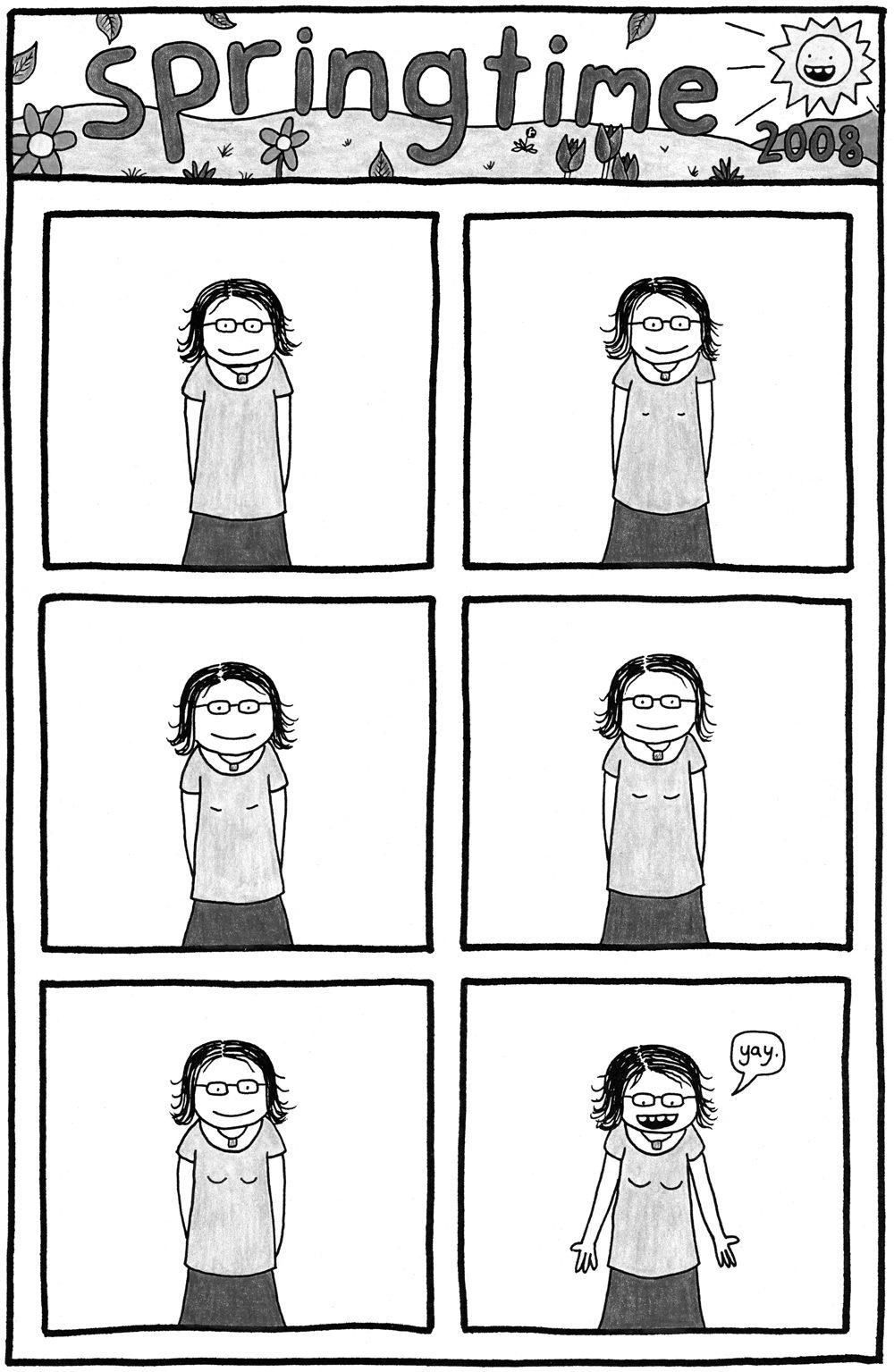[You can read part 1 of the No Straight Lines series here.]
Queer cartooning encompasses some of the best and most interesting comics of the last four decades, with creators tackling complex issues of identity and a changing society with intelligence, humor, and imagination. No Straight Lines, the new book published by Fantagraphics and edited by Justin Hall, celebrates this vibrant artistic underground by collecting four decades of excellent stories that can be enjoyed by all.
Justin Hall will be talking about and signing books in the Bay Area:
July 19th, 7-9pm, The Cartoon Art Museum
July 26th, 7:30-9:30pm, Castro Books Inc
July 28th, 7:30-9:30pm, Pegasus books
***
FILE UNDER QUEER: COMIX TO COMICS, PUNK ZINES, AND ART DURING THE PLAGUE
Gay Comix became one of the longest running underground comix anthologies, with 25 issues over the next 18 years. Cruse handed over the editorial reins to Robert Triptow with the fifth issue, and Bob Ross, owner of the San Francisco-based gay newspaper the Bay Area Reporter, took over as publisher with #6. Andy Mangels became editor with #14, and changed the title to Gay Comics in the next issue, dropping the “x” to reflect how the industry had changed, with material previously described as underground comix, in Mangel’s words, “now given the much friendlier name of ‘alternative comics.’”
During its illustrious run, Gay Comix was the backbone of the LGBT comics scene, providing a space where established comic book creators could expand their artistic horizons; where comic strip creators could publish longer format stories; and where new creators could cut their teeth, often with work of tremendous artistic courage. It was a series in which personal, intimate storytelling, as well as bizarre, fantastical concepts, were used to describe queer experiences. Leather zombies, super-powered lesbians, and swishy fish shared space with stories about coming-out, the loss of loved ones to AIDS, and cruising the backroom of a gay bar. Gay Comix was a place where LGBT readers and comics fans could find stories that reflected their lives and passions, providing inspiration and community in a difficult world.
At the same time that Gay Comix was establishing itself, Ralf König was beginning his cartooning career, basing much of his work on the leather subculture of Cologne. He produced strips that were eventually collected and published in 1981 as SchwulComix (Gay Comix). In 1987, he created Kondom des Grauens (The Killer Condom), his first comic with a continuous story, which was later made into a film. He swiftly became Germany’s most successful and prolific comic book creator, gay or straight, and the most visible queer cartoonist in Europe.
Despite König’s success and the contributions of creators such as Nazarrio, Holland’s Tom Bouden, and the acclaimed French memoir cartoonist Fabrice Neaud, the world of LGBT cartooning in Europe remains significantly less developed than in North America. “The advantage for the U.S. is the common language of 300 million people,” says Francois Peneaud, the creator of the websites The Gay Comics List and LGBT BD. “In Europe, there are more than a dozen languages, and the potential audience is thus far more fragmented. So, niche artists face a more uphill struggle to make their works known.” Different artistic traditions and cultural mores, as well as the economic challenges of publishing, make translating European works into the English-speaking market difficult as well.
While Gay Comix was changing the landscape for LGBTQ comic books in the U.S., the gay newspapers were simultaneously nurturing a market of queer comic strips. As early as 1977, Rupert Kinnard’s Cathartic Comics showcased the first ongoing, queer, African-American characters, and Cruse began his series Wendel in the pages of the Advocate three years later, thus creating the first serialized, intimate look at a gay couple in comics. Alison Bechdel soon joined him in 1983 with her popular strip Dykes To Watch Out For, which chronicled the lives of a group of urban lesbians. Gay newspapers were numerous enough during the 1990s that they could provide a successful weekly strip cartoonist with a living wage, or near to it. Eric Orner’s The Mostly Unfabulous Social Life of Ethan Green and David Kelly’s Steven’s Comics were important strips that appeared during that decade.
The weekly strips’ publication in the gay newspapers gave them a timeliness and immediacy that was often used for direct political and social commentary. It also placed them even farther outside of the traditional comics industry than the queer comic books and tied them in even more strongly to the LGBTQ community and the queer media ghetto.
The first cases of HIV/AIDS appeared in 1983, and the disease spread quickly through the gay community. Homophobic backlash compounded the horrific tragedy, and the gay community soon found itself literally fighting for survival. LGBTQ cartoonists’ responses to this holocaust were varied. From the searing rage of David Wojnarowicz’s posthumously published comic Seven Miles a Second, to the biting sarcasm of Carl Vaughn Frick’s Watch Out! Comix, to the empathy of Jaime Cortez’ Sexile (a biography of AIDS activist and proud trans woman Adela Vazquez), cartoonists provided an intimate look into people’s fear, anger, despair, as well as courage and precarious hope in the face of such a profound challenge.
Robert Triptow was living in San Francisco and editing Gay Comix when his friends, including several cartoonists, began dying in droves. “Every weekend would be full of funerals,” Triptow said, “and it was hard to make comics when everyone was dying all around you.” In 1988, Triptow helped create the benefit comic Strip AIDS USA; Trina Robbins had seen the U.K. anthology Strip AIDS put together by Don Melia and Lionel Gracey-Whitman and was inspired to create an American version, asking Triptow and Bill Sienkiewicz to join her as co-editors. These three saw comics as a tool to both raise money and help educate: as Triptow wrote in the introduction, “You can’t get AIDS from reading this book. Instead, it could be part of a cure… for hysteria, the other AIDS epidemic.”
The story of HIV/AIDS occurred on a timeline similar to that of a social movement that also had a profound impact on LGBTQ comics: punk and its attendant zine culture. A strong DIY (do-it-yourself) and creative ethos, combined with the emergence of more affordable production technologies such as cheap photocopy machines, Super 8 film, and 4-track recording devices gave the punk movement a heady, democratic vitality. It seemed like everyone was in a band, making films, and creating comics.
New distribution methods emerged to handle this underground market, with publications such as Factsheet 5 serving as a clearing house and providing reviews for other zines and mini-comics (ie. magazines and comics produced on photocopy machines and folded and stapled by hand, in lieu of a professional printer and publisher). These zines and minis could be ordered through the mail directly from the creators and paid for by hiding a couple of dollars in the letter.
The publication of the zine J.D.s by G.B. Jones and Bruce LaBruce in 1985 launched the queer punk movement “homocore” (later renamed the more inclusive “queercore”). Queercore was designed to piss off both the punk mainstream and the establishment gay and lesbian culture, aligning itself with third wave feminism and the riot grrrl movement by reclaiming derogatory language (“bitch,” “dyke,” and “queer”) and rejecting binary gender notions and mainstream assimilation. It set the stage for a wave of punk and post-punk mini-comics, such as Diane DiMassa’s cathartic Hothead Paisan: Homicidal Lesbian Terrorist and Craig Bostick’s comics biography of punk icon Crash Darby, by offering young, alterna-queer creators an entre into a new world of self-publishing. As comics historian Sina Shamsavari writes,
These cartoonists were of course critical of homophobia, but far less concerned with affirming a sense of shared gay identity and community, and much more concerned with focusing on their personal lives and identities, with critiquing mainstream gay culture as conformist and commercialized, and with creating an alternative vision of queer life and culture.
Queer perspectives were becoming more complex, and cartoonists were tackling the new zeitgeist with their usual gusto. As Angela Bocage wrote in 1990 in the introduction to the first issue of her anthology series Real Girl (“the sex comic for all genders and orientations by cartoonists who are good in bed”), “If gender identities, the real-ness of girl and boy, are plastic, they can be melted down. Re-shaped. First a re-imagining of the possibilities would be called for. … Comics are well suited to these explorations. … Comics can show subjective worlds very well.”
This promise was especially borne out by the women cartoonists. In 1990 Andrea Natalie formed the Lesbian Cartoonists Network, and anthologies such as Girl Frenzy and Dyke’s Delight were giving voice to a vibrant creative scene. New artists such as Roxxie, Leanne Franson, and Kris Dresen joined veterans like Jennifer Camper and Roberta Gregory to create a golden age of dyke comics. Dyke Strippers, edited by Roz Warren in 1994, collects an excellent cross-section of this work.
Robert Kirby was inspired to create comics in 1990 by picking up, on a random impulse, an issue of Holy Titclamps, a free zine packed with comics and the enticing words “file under queer” stamped on the cover. Lightning struck. He later wrote, “A lot of people who did their own zines had the same little epiphany that I did, encountering a homemade alterna-publication that created an instant frisson, a sense of new creative possibilities.” The result was his mini-comic series Strange-Looking Exile.
He later refined his craft, producing the weekly strip Curbside and by 1994 the seminal anthology Boy Trouble, with co-editor David Kelly, which was intended to generate some of the same dynamism among male cartoonists that abounded in the queer women’s scene. The anthology helped galvanize a new wave of gay male cartoonists, such as Steve MacIsaac and Victor Hodge, while also featuring more established creators such as Ivan Velez Jr., Jon Macy, and even Howard Cruse. Ever the agitator, Kirby is now editing a new anthology series called Three, featuring new breakout, queer cartoonists such as Ed Luce and Joey Alison Sayers.
Look for Part 3 of this post tomorrow.








One response
Check out the comic “Rebel Rebel” by MJ Robinson, a college classmate of mine. The author describes it as “genderific” – it’s quite good, deserves some recognition, and definitely fits in with this theme.
http://mjcomics.com/2011/08/rebelrebel000/
Click here to subscribe today and leave your comment.